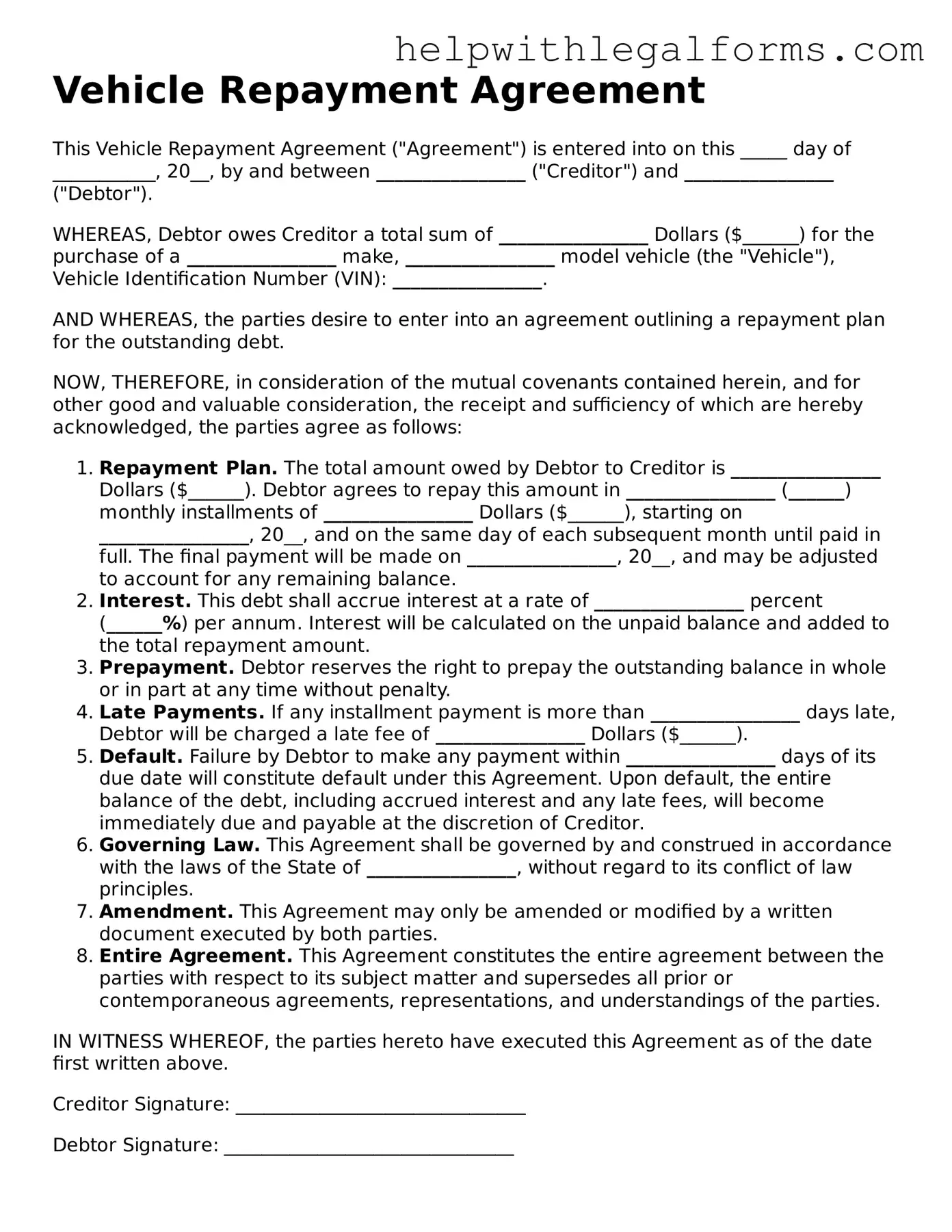Vehicle Repayment Agreement
This Vehicle Repayment Agreement ("Agreement") is entered into on this _____ day of ___________, 20__, by and between ________________ ("Creditor") and ________________ ("Debtor").
WHEREAS, Debtor owes Creditor a total sum of ________________ Dollars ($______) for the purchase of a ________________ make, ________________ model vehicle (the "Vehicle"), Vehicle Identification Number (VIN): ________________.
AND WHEREAS, the parties desire to enter into an agreement outlining a repayment plan for the outstanding debt.
NOW, THEREFORE, in consideration of the mutual covenants contained herein, and for other good and valuable consideration, the receipt and sufficiency of which are hereby acknowledged, the parties agree as follows:
- Repayment Plan. The total amount owed by Debtor to Creditor is ________________ Dollars ($______). Debtor agrees to repay this amount in ________________ (______) monthly installments of ________________ Dollars ($______), starting on ________________, 20__, and on the same day of each subsequent month until paid in full. The final payment will be made on ________________, 20__, and may be adjusted to account for any remaining balance.
- Interest. This debt shall accrue interest at a rate of ________________ percent (______%) per annum. Interest will be calculated on the unpaid balance and added to the total repayment amount.
- Prepayment. Debtor reserves the right to prepay the outstanding balance in whole or in part at any time without penalty.
- Late Payments. If any installment payment is more than ________________ days late, Debtor will be charged a late fee of ________________ Dollars ($______).
- Default. Failure by Debtor to make any payment within ________________ days of its due date will constitute default under this Agreement. Upon default, the entire balance of the debt, including accrued interest and any late fees, will become immediately due and payable at the discretion of Creditor.
- Governing Law. This Agreement shall be governed by and construed in accordance with the laws of the State of ________________, without regard to its conflict of law principles.
- Amendment. This Agreement may only be amended or modified by a written document executed by both parties.
- Entire Agreement. This Agreement constitutes the entire agreement between the parties with respect to its subject matter and supersedes all prior or contemporaneous agreements, representations, and understandings of the parties.
IN WITNESS WHEREOF, the parties hereto have executed this Agreement as of the date first written above.
Creditor Signature: _______________________________
Debtor Signature: _______________________________
Date: __________________
